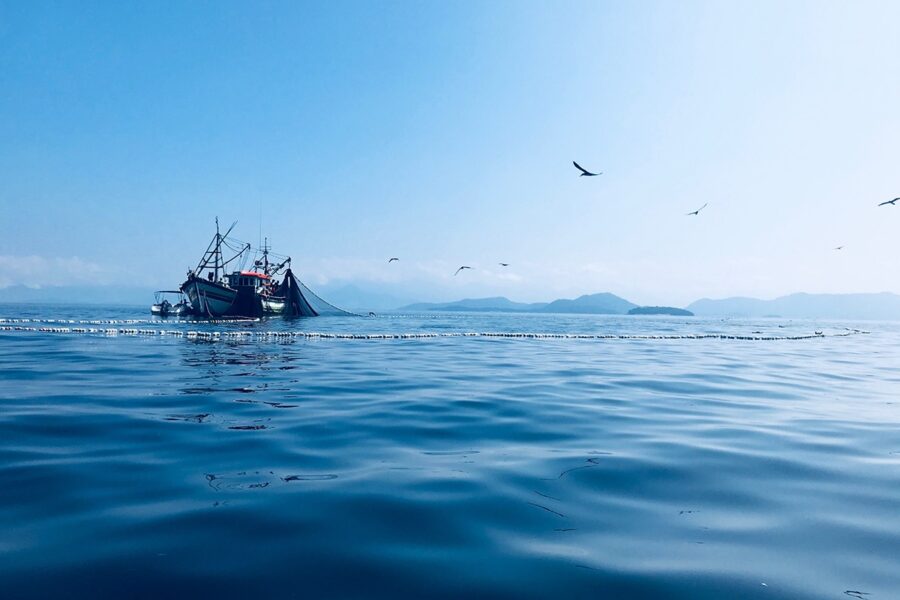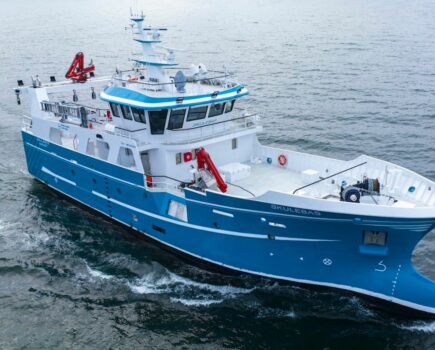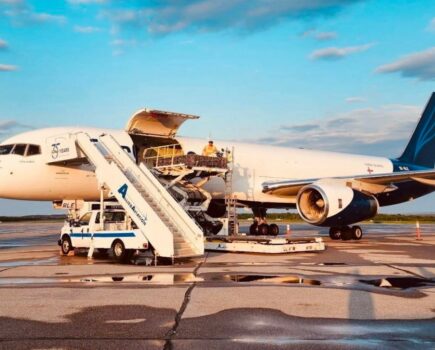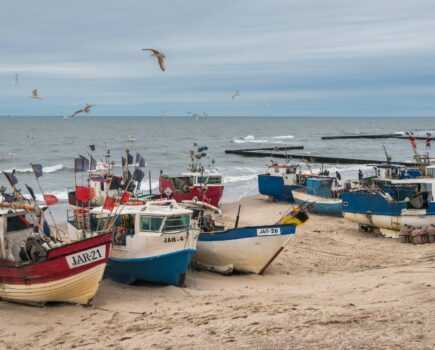The MMO has launched a ‘call for evidence’ on the impacts of fishing activity in 13 MPAs, reports Tim Oliver.
It says the evidence call is to progress conservation efforts in the MPAs. It follows new byelaws to prohibit ‘damaging fishing activity’ in four MPAs last month, including Dogger Bank and The Canyons, which will come into force on 13 June (Fishing News, 28 April, ‘Government announces new byelaws for MPAs’).
The MMO is seeking views on the impacts of bottom-towed gear (BTG) fishing in the MPAs, which contain some of the most sensitive features at risk from bottom trawling.
The evidence put forward will be used to inform the MMO’s draft assessments ahead of formal consultation in the autumn on management of the sites.
The NFFO slammed the announcement as another step in the rushed implementation of management measures in MPAs, which gave no time for proper consultation and assessment of complex issues. It would also create more displacement issues which the government was doing nothing to address, it said (see below).
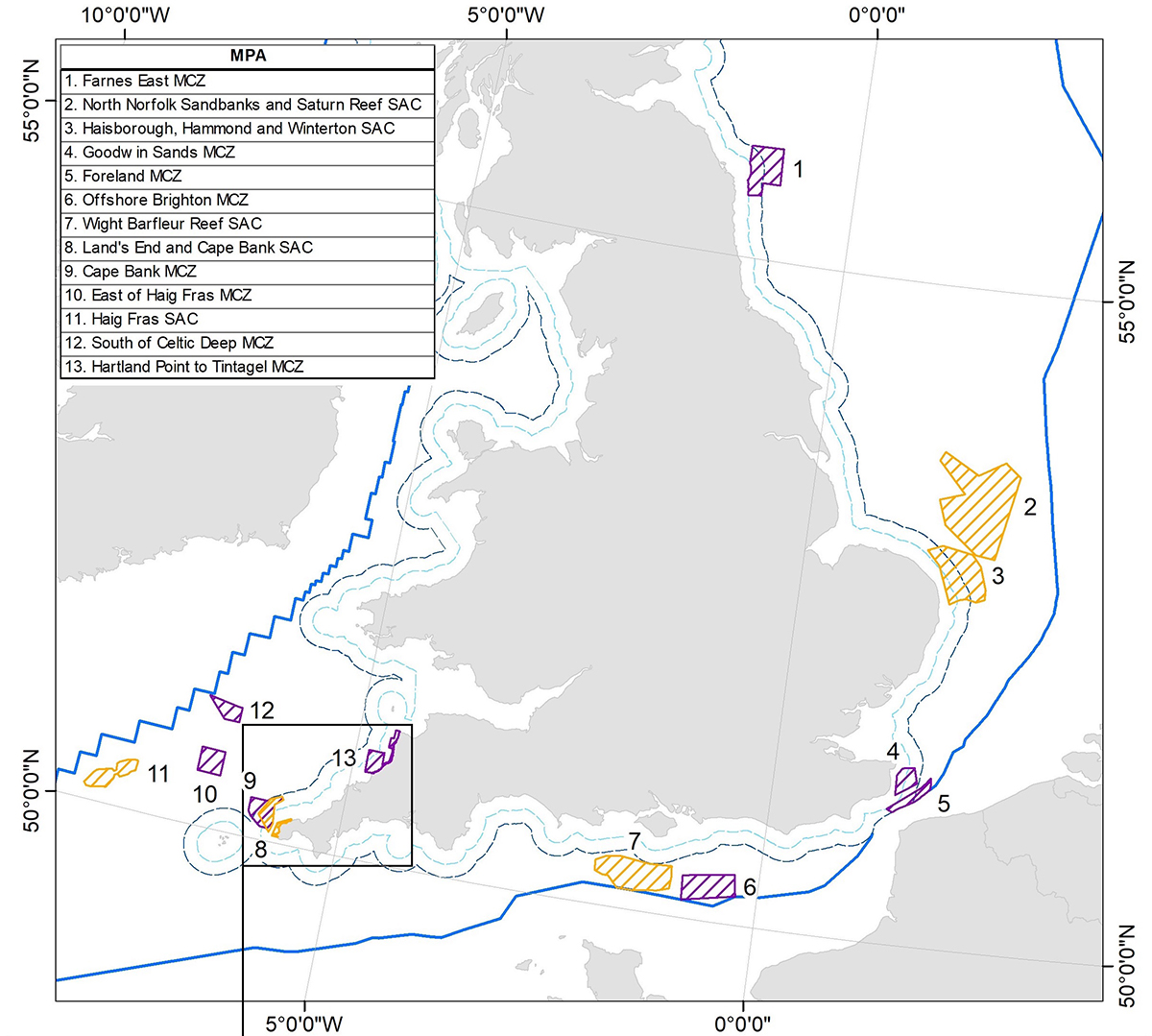
Map showing the Stage 2 MPAs. (Image: MMO)
The call for evidence applies to the following ‘Stage 2’ MPAs:
- Cape Bank
- East of Haig Fras
- Farnes East
- Foreland
- Goodwin Sands
- Haig Fras
- Haisborough, Hammond and Winterton
- Hartland Point to Tintagel
- Land’s End and Cape Bank
- North Norfolk Sandbanks and
Saturn Reef
- Offshore Brighton
- South of Celtic Deep
- Wight-Barfleur Reef
The MMO said it would review all the information received, carry out ‘appropriate consultation’ with stakeholders, and implement management measures to ensure the MPAs are protected.
It said: “Our intention is that the MPA fisheries assessment will be finalised, and any necessary management implemented, by summer 2023.”
Further proposals and another call for evidence on Stage 3 of the MPA management measures will come in the autumn.
This will cover everything not already covered by the Stage 1 and 2 MPA management processes, including how all other fishing gears will be managed in MPAs, and protection of highly mobile species.
The government intends that all management measures in MPAs will be in place by the end of 2024.
The creation of the draft MPA fisheries assessment for the 13 MPAs has involved analysing the best available evidence to determine the resilience and recoverability of selected reef and rock features to the impacts of BTGs, said the MMO.
Fishing activity data was also used to understand the level of activity in each of the sites.
Input and advice was also sought from the Statutory Nature Conservation Bodies and IFCAs on the draft assessment.
Before the final decision on management measures to be adopted and any byelaws, there will be a formal consultation in 2023.
The MMO is considering the following high-level management options to further the Stage 2 MPAs’ conservation objectives:
- Option 1: No fisheries restrictions. Introduce a monitoring and control plan within the site.
- Option 2: No statutory restrictions. Introduce a voluntary agreement.
- Option 3: Reduction of pressures associated with BTG(s) of concern, through zoned management (partial site prohibition of these gears over areas of highly sensitive designated features).
- Option 4. Removal of pressures associated with BTG(s) of concern through a whole-site prohibition of these gears.
“Any management measures will apply equally to all fishing vessels, regardless of nationality,” says the MMO.
The call for evidence will run until 10 July. The draft MMO assessment documents, including all relevant information on how to contribute to this process, are available here.
NFFO: ‘Bulldozer approach and zero dialogue’
The NFFO said the announcement meant the government was ‘doubling down’ on its ‘bulldozer approach’ to management of fishing in MPAs, and the rushed timeframe precluded any meaningful engagement.
“The timetable is politically framed to furnish the government with green credentials ahead of the next election, not what is good for the fishing industry – or ultimately the environment,” said chief executive Barrie Deas.
“Meaningful dialogue with the fishing industry to date has been zero. We have had only cosmetic consultation, and been given only eight weeks to respond to highly technical proposals.”
He said the proposals would inevitably mean vessels would be displaced from normal fishing grounds, creating displacement of fishing effort as boats were forced to move to other areas.
The pressure on MPAs would come on top of the massive expansion of offshore wind already underway, and the coming introduction of Highly Protected Marine Areas where no fishing will be allowed, further increasing the ‘spatial squeeze’ on fishermen.
“We are facing looming displacement chaos but there is silence on this critical issue. In 92 pages of documentation, only 10 lines recognise the displacement issue – and they say nothing about how it will be handled,” said Barrie Deas.
He pointed out that ICES had carried out work to assess the impact of bottom trawling in EU waters, and had advised that bottom trawling can be compatible with good environmental status.
This story was taken from the latest issue of Fishing News. For more up-to-date and in-depth reports on the UK and Irish commercial fishing sector, subscribe to Fishing News here or buy the latest single issue for just £3.30 here.

